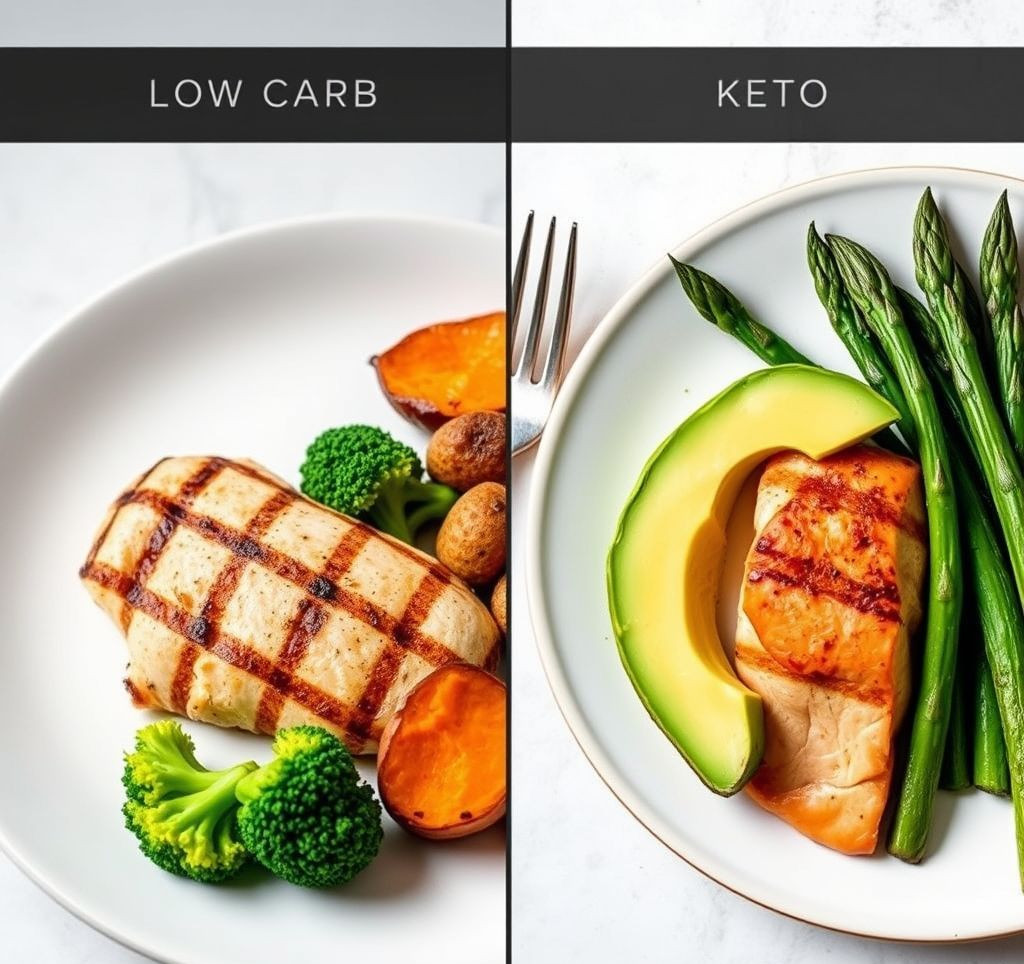Embarking on a journey to improve your health or manage your weight often leads to exploring dietary options. Two prominent choices are low-carbohydrate (low carbs) diets and the ketogenic (keto) diet. While they might seem similar at first glance, understanding their distinctions is crucial for achieving your specific health goals. Many searches for “low carbs recipes keto” can leave you confused. Let’s clarify the similarities and, most importantly, the differences.
Why Understanding the Difference Between Low Carbs Recipes & Keto is Crucial
Choosing the right approach can make a significant impact on your well-being. Recognizing the nuances between general low carb and specifically keto diets helps you:
- Tailor your diet to your individual needs: Not everyone thrives on the same macronutrient ratios.
- Achieve specific health or fitness goals: Weight management, blood sugar control, and increased energy levels are common objectives.
- Avoid common pitfalls: Understanding the rules prevents frustration and ensures success.
- Effectively utilize low carbs recipes keto: Knowing which recipes align with your dietary choices brings intention to what you eat.
Core Principles: Low Carb vs. Keto
Both low-carb and keto diets restrict carbohydrate intake, but the degree of restriction sets them apart.
Low Carb Diets
A low-carb diet generally limits carbohydrate intake to between 50-150 grams per day. This can vary based on individual needs and activity levels. The remaining calories typically come from protein and healthy fats. There’s less of a focus on hitting exact macro ratios compared to keto.
Ketogenic Diets
The keto diet is a very low-carb, high-fat diet designed to shift the body into a metabolic state called ketosis. Ketosis occurs when the body, deprived of carbohydrates for energy, begins to burn fat for fuel, producing ketones. To achieve and maintain ketosis, carbohydrate intake is drastically reduced, typically to less than 50 grams per day, with some people needing to stay below 20-30 grams per day. The macronutrient breakdown is roughly 70-80% fat, 20-25% protein, and 5-10% carbohydrates. One of the key differences when searching for “low carbs recipes keto” is understanding the carb counts allowed within these ranges.
Navigating Low Carbs Recipes Keto: Examples and Considerations
Here’s a breakdown with examples of foods and recipes that fit into each category. This helps when filtering the search results for “low carbs recipes keto.”
Low Carb Recipes
These r
ecipes are lower in carbohydrates but allow for more flexibility in food choices. They often include some starchy vegetables, fruits, and whole grains in moderation.- Example: Grilled chicken salad with mixed greens, avocado, and a vinaigrette dressing.
- Considerations: Portion control is key to stay within your carb limits. Track your intake carefully.
Keto Recipes
These recipes are specifically designed to maintain ketosis. They are very high in fat and very low in carbohydrates, often excluding even moderately starchy vegetables and most fruits.
- Example: Avocado chicken salad made with mayonnaise and served over spinach.
- Considerations: It’s crucial to monitor ketone levels (using urine strips, blood ketone meters, or breath analyzers) to ensure you’re in ketosis. Watch out for “hidden” carbs in sauces and dressings.
Many recipes can be adjusted to fit either diet depending on serving size and added ingredients. A stir-fry with cauliflower rice and lean protein could be keto-friendly with specific ratios of fat and protein, or a low-carb option depending on the amount of rice and added vegetables. The key is carefully selecting ingredients and sticking to your target macronutrient goals.
Expert Tips & Best Practices for Low Carb and Keto Diets
To maximize success with either approach, consider these tips:
- Plan your meals: Pre-planning helps you stay on track and avoid impulsive choices.
- Read labels carefully: Be mindful of added sugars and hidden carbohydrates in processed foods.
- Stay hydrated: Drinking plenty of water is essential, especially when starting a keto diet.
- Listen to your body: Pay attention to how different foods affect you and adjust your diet accordingly.
- Consult with a healthcare professional: Talk to your doctor or a registered dietitian before making significant dietary changes, especially if you have underlying health conditions.
- Be patient: It takes time for your body to adjust to a new way of eating. Don’t get discouraged if you don’t see results immediately. According to a study published in the American Journal of Clinical Nutrition, individuals following a low-carb diet showed significant improvements in cardiometabolic risk factors within a few weeks.
“The ketogenic diet is a powerful tool for weight loss and blood sugar management, but it’s not a magic bullet. It requires commitment and careful planning to be done safely and effectively.” – Dr. Eric Westman, Duke University



















